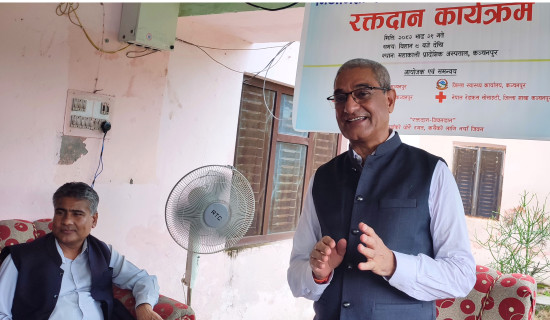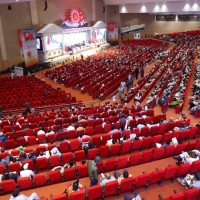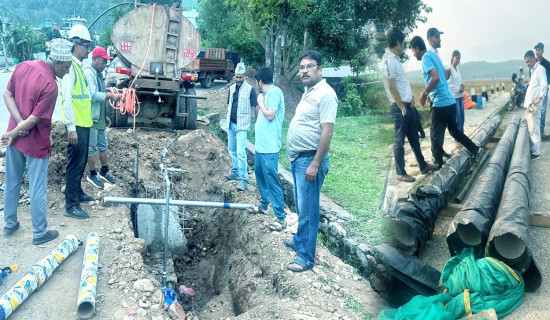- Sunday, 7 September 2025
Agriculture engages 60% workforce but generates only 24% of GDP
By Laxman Kafle,Kathmandu, June: The contribution of the agricultural sector (agriculture, forest and fisheries) to total gross domestic product is estimated at 24.1 per cent in the current fiscal year 2022/23.
The contribution of the agricultural sector to the GDP has been steadily declining over the years. The share of the agriculture sector to the GDP was 30.3 per cent in the fiscal year 2013/14. The contribution of the agriculture sector to the GDP was 24.7 per cent in the last fiscal year. The involvement of the population in the agricultural sector is gradually declining due to the increasing use of technology and professionalism in agriculture and expansion of the service sector.
Similarly, the increase in the area of barren land in the hilly areas, the increase in the number of young people going abroad and the increasing attraction of people to other areas instead of agriculture has affected the growth of agricultural production and the contribution to the total domestic product has decreased.
According to the Nepal Labour Force Survey of 2018, 60.4 per cent of the population was engaged in the agriculture sector, but in 2021 the proportion has decreased to 50.4 per cent.
According to the economic survey of the current fiscal year 2022/23 published by the government recently, the growth of the agriculture sector is projected to grow by 2.73 per cent and non-agriculture sector by 1.92 per cent in the current fiscal year.
The growth of agriculture was 2.24 per cent and non-agriculture was 6.56 per cent in the last fiscal year.
Average growth rate of the agriculture sector is 2.9 per cent in the last one decade. The contribution of non-agriculture sector to GDP is projected to be 75.9 per cent in the current fiscal year
While the contribution of the agriculture sector to the total gross domestic product has been declining, the contribution of the service sector has been increasing.
The contribution of agriculture, industry and service sector has been 24.1 per cent, 13.5 per cent and 62.8 per cent respectively. The economic growth of the country is projected to be at 2.16 per cent in the current fiscal year. The economic growth of the country was 5.26 per cent in the last fiscal year.
This shows that with the change in the structure of the country, Nepal’s economy has been gradually transformed from agricultural to a service-oriented one.
According to the economic survey of the current fiscal year 2022/23 published by the government recently, the share of food crops has been higher in total agriculture production.
Out of agriculture production of the current fiscal year, the share of food crops is 44.95 per cent, vegetables 17.41 per cent, cash crops 15.23 per cent, industrial crops 12.5 per cent, fruits 5.82 per cent and others 4.10 per cent.
During this period, production of spices, vegetables, cash crops, fruits and honey has increased while production of food crops, pulses and industrial crops has decreased.
In the current fiscal year, production of cereal crops, including rice, wheat and maize are estimated to increase by 3.9 per cent and reach 12 million tonnes.
In the last fiscal year, such production had decreased by 3.3 per cent.
Out of the total area covered by agricultural crops in the current fiscal year, the area planted with cereal crops is 71 per cent. The production of paddy has increased by 6.90 per cent in the current fiscal year.
Of all the agricultural crops, productivity of vegetables is high while that of industrial crops is low.
During the review period, the production and productivity of honey, spices, vegetables and fruits has increased by 5.4 per cent, 4.42 per cent, 4.31 per cent and 2.14 per cent respectively.

















